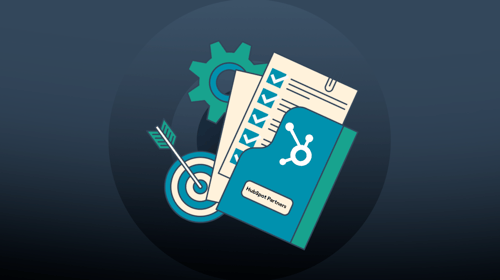Growing a business often feels like navigating unfamiliar territory as a hunter-gatherer. You need to keep moving forward to find new sources of food and water — your customers and revenue — but life is unpredictable and you never know what lies around the next hill or across the next valley. All you can be sure of is that your resources are steadily declining, and your tribe’s survival depends on always finding more.
Customer attrition, or churn, is a fact of life; especially for growth-oriented businesses that are scaling rapidly. While the average customer churn rate for a B2B business is around 5%, the revenue loss will vary dramatically depending on the size of the account lost. As such, it makes sense to minimise the likelihood of your largest — or “key” — accounts taking their business elsewhere.
This is why Key Account Management is one of the most effective ways to counteract this unavoidable revenue loss. Managing and tending to key accounts not only mitigates the risk of losing their existing business, it also maximises the opportunity for upselling and cross-selling new business to meet growth targets.
Going back to our hunter-gather analogy, hitting sales targets and driving growth traditionally means looking elsewhere: new business, new clients, new markets. But just as our hunter-gatherer ancestors realised — when they settled down, domesticated animals, and planted crops — farming is a reliable and sustainable way to “reap the good stuff” and achieve continuous growth.
Why hasn’t every company embraced Key Account Management?
For many companies, Key Account Management is easier said than done. They’re held back by incompatible structure and processes, or simply do not understand how best to approach their high-value accounts — focusing on retention without giving equal importance to growth, for instance. According to Gartner's research, only 28% of sales leaders believe account management channels regularly meet cross-selling and account growth targets. This is likely due to the widespread misconception that delivering outstanding customer service will have a positive impact on growth targets. While it’s great for retention and the continuation of products and services that have already been sold, customer service has little-to-no impact on account growth.
Imagine standing with your hunter-gatherer tribe and looking across an impassable canyon at lush, fertile land on the other side. Land that is perfect for farming crops. You can practically taste the food security, but you have no way of getting across without some kind of bridge. This is the situation these businesses find themselves in today. They’re aware of Key Account Management, but they have no way of getting their teams there without the right frameworks, tools, and guidance.
If this situation sounds painfully familiar to you, we’ve got some great news. We at Huble Digital have not only developed a bridge to Key Account Management — we’ve done so using HubSpot CRM software.
Making Key Account Management work in HubSpot
HubSpot offers many tools and features across its five hubs — Marketing, Sales, Service, CMS, Ops — using these tools together helps companies acquire new customers, as well as retain and grow existing customers. As a “Triple Elite” HubSpot solutions partner, we’ve drawn on our collective expertise and taken this a step further, leveraging existing HubSpot features to enable Key Account Management within the platform.
Specifically, our team configured the CRM platform to facilitate upsells, cross-sells, client health, and improved relationship management. The results have been amazing, setting a new standard for scalable Key Account Management processes that are standardised across client service teams, business units, and service delivery.
And remember, Key Account Management can only function in the long term if all Key Account Managers are following the same scalable processes. Our framework facilitates just that: scalable and repeatable processes that every key account manager can utilise.
So, can you finally cross the canyon to the promised land of Key Account Management?
The short answer: yes! The slightly longer answer: with the right expertise, guidance and frameworks in place, you can confidently use HubSpot for client acquisition and sustainable growth of key accounts. Or to put it another way, with HubSpot and Huble Digital, you can hunt, gather and farm to your heart’s content.
If you’re interested in turning HubSpot into your ultimate Key Account Management platform, we’d love to help make it happen. Reach out to a Huble consultant today and let’s move your business forward. Or click here to learn more about our Sales and CRM Consultancy services.










-3.png?width=500&height=320&name=Matt%20-%20imagery%20bank%20(8)-3.png)

